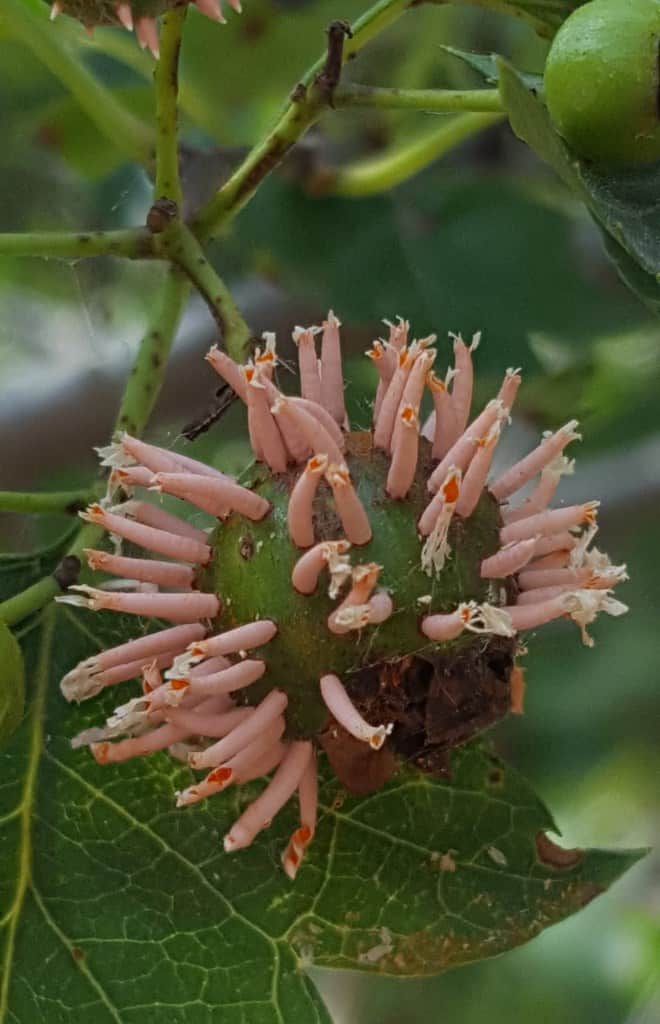What a year for diseases! With a cool, wet spring, followed by a warm, dry summer, and then into a cool, wet August, we have had a myriad of diseases popping up in landscapes. I also saw a few abiotic problems on trees-damage done by homeowners unknowingly. We are here to help you learn what the best care for your trees and plants are.
After spraying peach trees in February, I was not expecting the outbreak of Peach Leaf Curl. This disease distorts the leaves and fruit and can cause fruit to drop prematurely. I suspect the chemical I had used for spraying was damaged, either by heat or cold, but I may never know for sure.

My in-laws called me in to look at an oak tree by their pond, early in May. By first glance, I thought maybe oak decline or a leaf disease. However, the tree was dead in less than 6 weeks from start to finish. We sent samples into KSU, but they could not confirm my diagnosis of Oak Wilt. This was the first time I had seen this disease.

Shot-hole appeared next on a plum tree, shortly after the rain stopped. This fungal disease is spread through splashing water or irrigation. While ugly in appearance, shot-hole does not kill the plant, only pits the leaves.

Another plum disease is black-knot, a fungal infection that can cause stunting and growth problems. This disease is exactly like it sounds, large black, twisted knots that cover branches and leaves. It should be pruned out, with an alcohol cleanse of the pruners between each cut.

Here is a close-up look at cedar-hawthorn rust. This is the fruiting body on the hawthorn fruit. This disease can cause the fruit and leaves to fall, forcing the tree to produce new leaves and using up valuable resources.

Powdery mildew on ninebarks killed several larger, older plants. We saw damage on ‘Diablo’ and ‘Center Glow’, but the disease did not show up on ‘Little Devil’ at all.

One of the worst things someone can do to trees is to incorrectly mulch them. We promote mulching around trees to protect against moisture loss, mower and trimmer damage, but “volcano mulching” is not the right way to go about it. When mulching around trees, it is best to keep the mulch level, gently sloping away from the tree, and at least 3 inches from the trunk, to prevent moisture buildup on the bark.

Always remember to take off the wire and stakes used to stake trees! If left too long, the branch will grow against the wire and will be girdled by it, strangling the tree for nutrients and water. This spot can also become an entry point for diseases and insects.

Happy planting and Merry Christmas!



